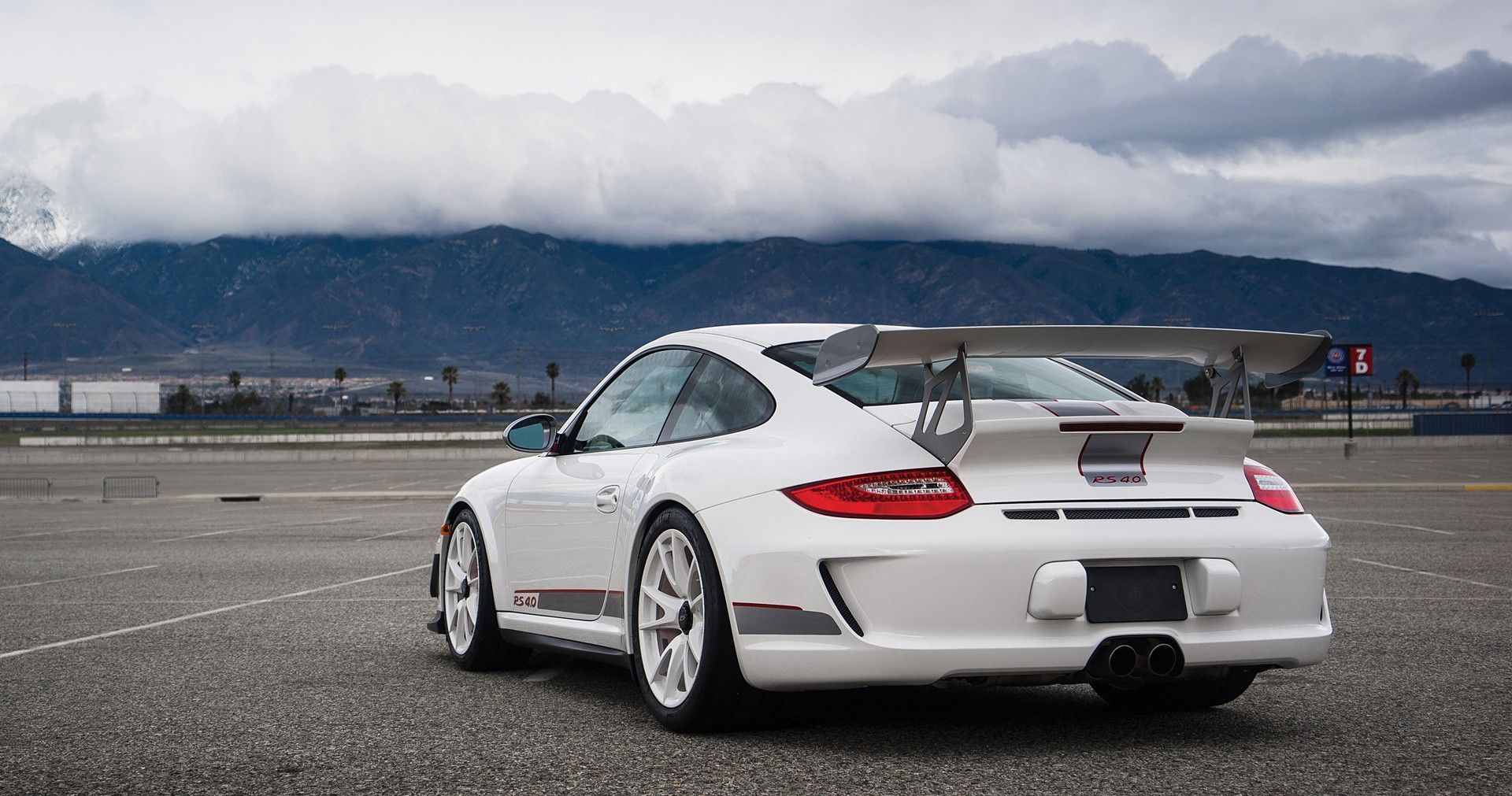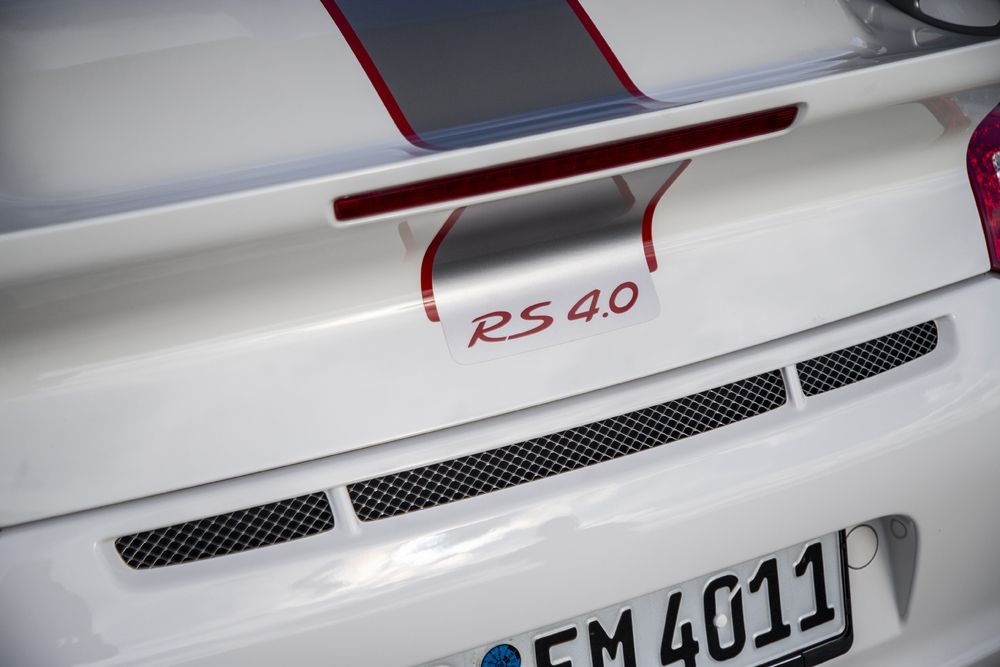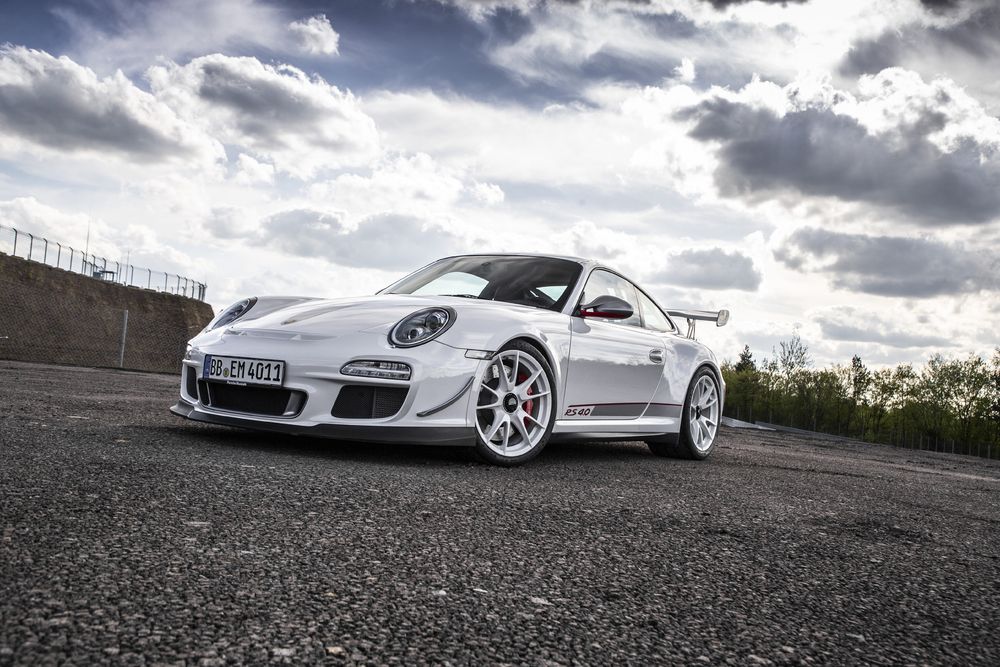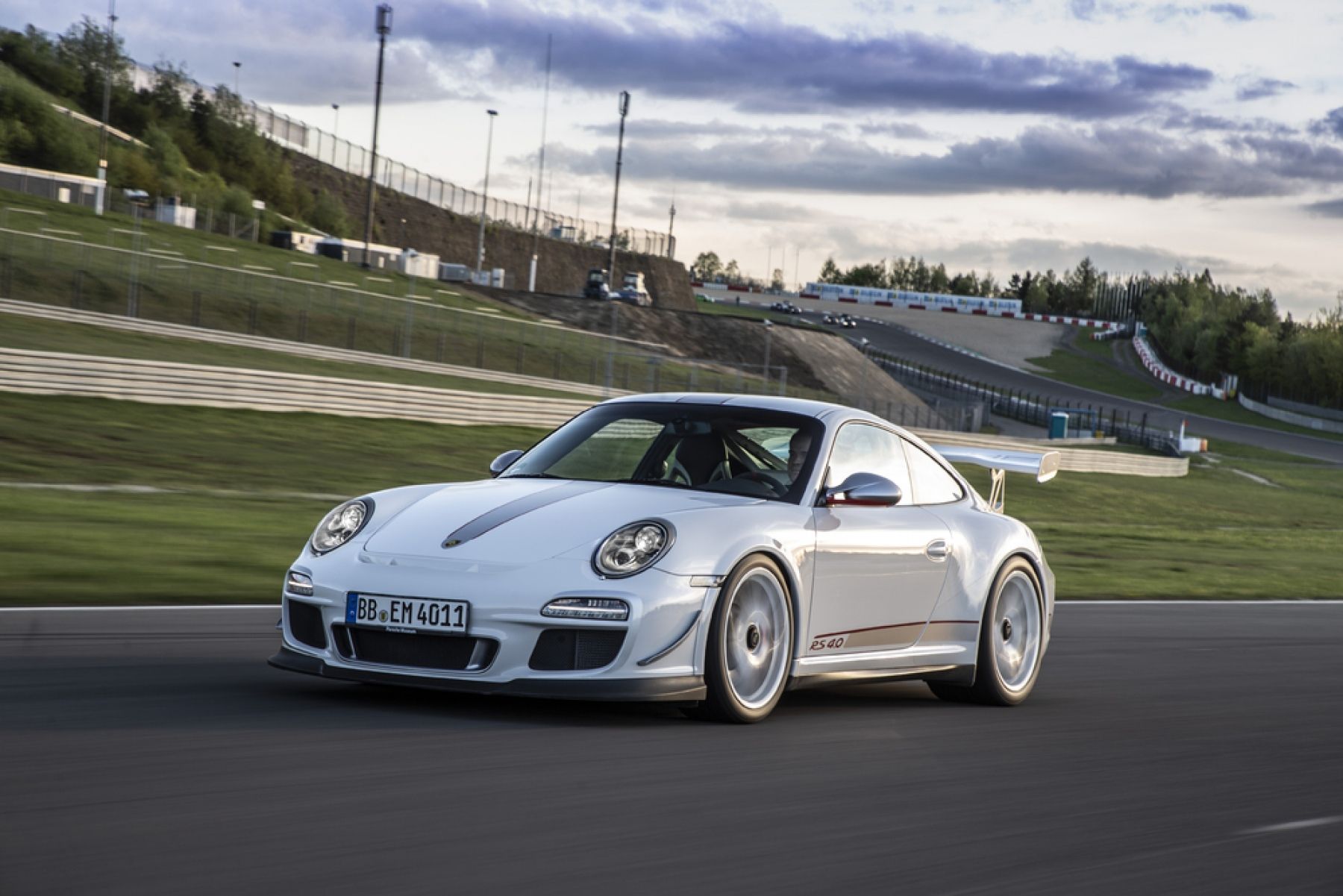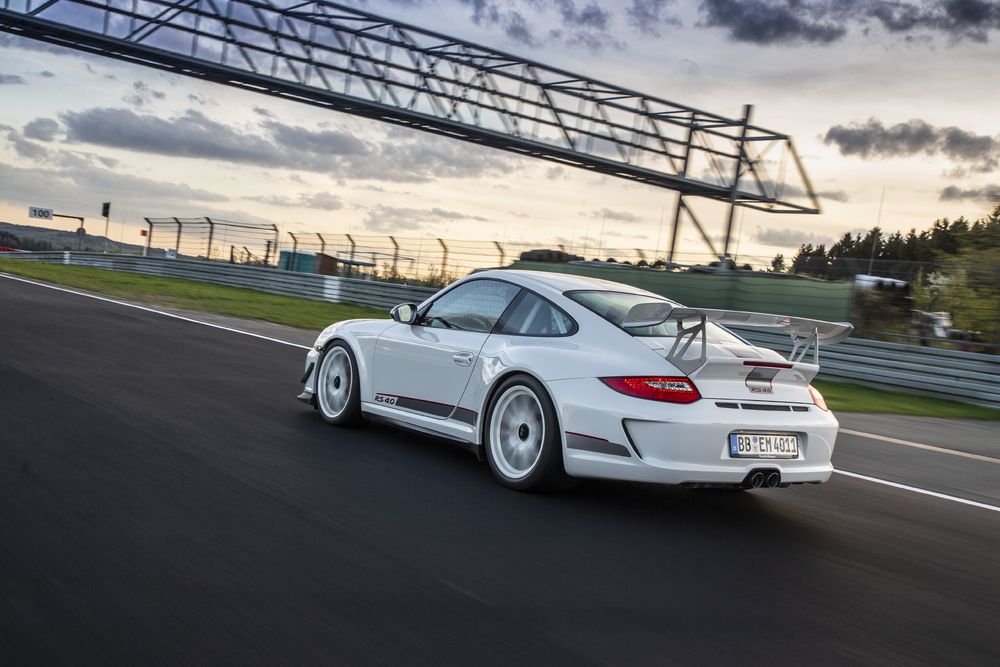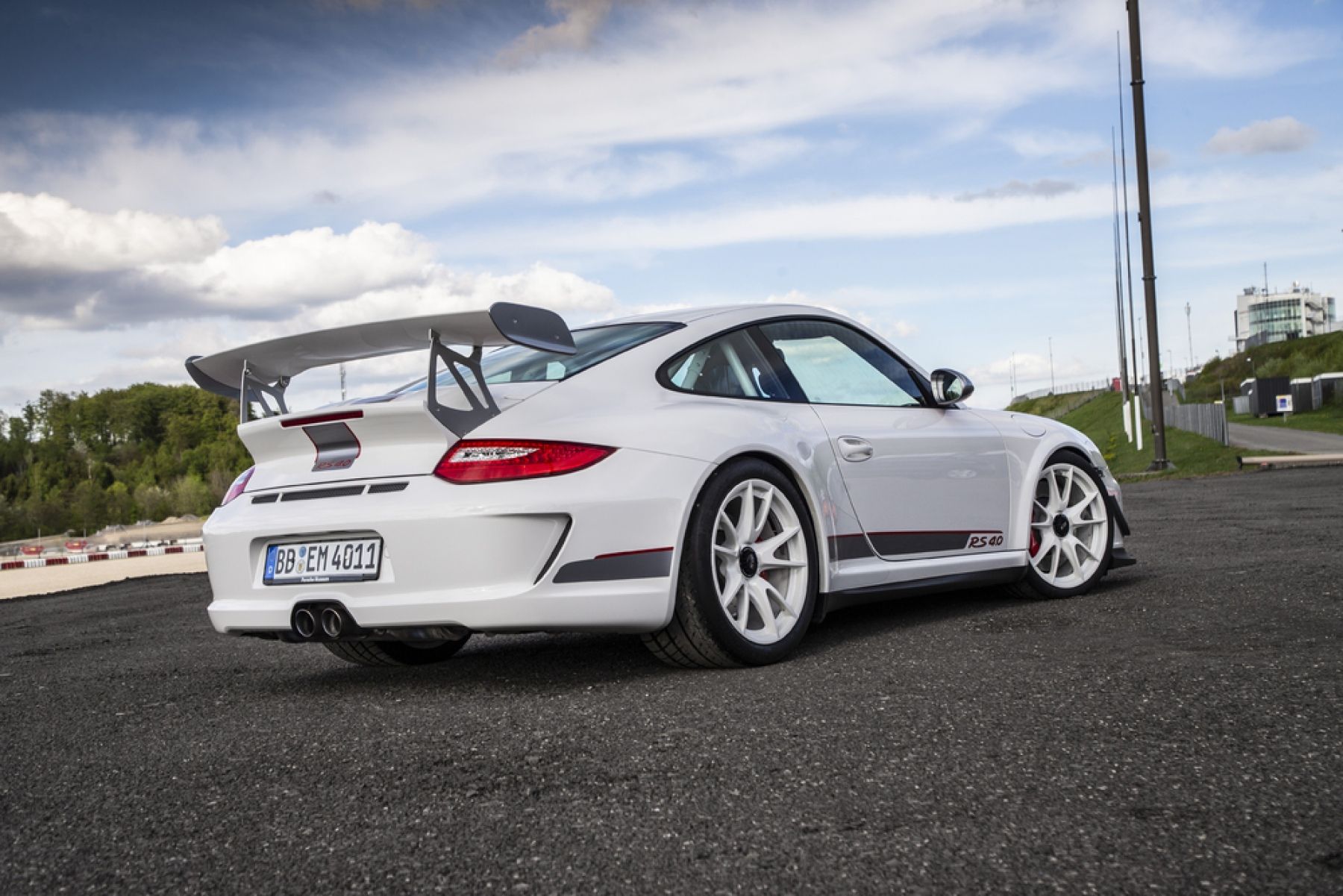Porsche’s 911 platform is an example of evolution favoring over revolution. This shows how dynamically capable Porsche’s near 60-year-old platform is for a sports car. These days, the brand’s ethos favors both luxury and performance. Porsche’s 911 lineup is divided between the road going everyday 911s and the more performance-focused GT products.
It’s more than impressive to keep developing something that’s already better but that’s how Porsche’s GT division works. The program has given birth to some of the most iconic automobiles in the motoring world. The 996 GT3 kicked off the GT program for road use and the team has been delivering ever since. The GT2, labeled the “windowmaker” by many critics was one for the purists. However, the 997 GT3 RS 4.0 is something way beyond them, it’s the collector’s car.
We’ve been seeing increased demand for the GT3 RS 4.0. Prime examples are shooting up in value and will easily go down as the collector’s Porsche. Here’s why.
Let’s Go Over The Mechanicals
If you are to look at both the 997 RS 3.8 and RS 4.0 engines together, at first glance you may not find anything intriguing. Aside from the exposed air-filters unlike Porsches of today, you get a clear view of its engine- the last of the Mezger flat-six.
For more than three decades, Hans Mezger was responsible for Porsche's most successful racing cars and engines. His demise a few months ago led to many in the community praising his work and contributions to the racing world and most importantly Porsche. The 997 RS 4.0 was the last of the 911s to house the motorsport-derived Mezger engine. The current 991 GT3 and RS models use a different engine developed using learnings from the Mezger unit.
The 997 RS 4.0 had a 4.0-liter naturally aspirated flat-six pushing 493 horsepower and 339 lb-ft of torque. The four-liter is one of the best sounding engines ever put in a GT3. The motor shares its block, crank, and titanium rods with the track-only 911 GT3 R and RSR of that generation. Internally, the engine had significant differences from RS 3.8. Valve timing is different, the inlet manifold has wider, shorter runners, and is a thinner casting. The four-liter used track-specific air filters and shorter compression ratios at 12.6:1 versus 13:1 in the RS 3.8. Furthermore, the RS 4.0 had unrestricted catalytic converters allowing for the four-liter to produce more power per liter than the 3.8. The engine is mated to a slick 6-speed manual transmission. The RS 4.0 was exclusively a manual and had short ratios that show its track-focused dynamics.
How Does It Drive
The RS 4.0 was the pinnacle of Porsche’s engineering prowess for the time. Since the 991 generation, Porsche has improved their GT products substantially. However, the RS 4.0 was during a time when Porsche’s reliance on electronics was much less than it is today. The semi-analog driving feel is always a dream and Porsche was among the very few to nail it.
The RS 4.0 is not a docile machine but was tuned to deliver an experience mirroring that of a race car much like the 991.2 GT3. The engine is very tractable and the gearing suits double-digit speeds as much as it does with triple-digits. Moreover, the steering offers brilliant feedback as is the case with Porsche's GT cars.
The RS 4.0’s character depends on how deep your right foot is on the throttle. There is every possibility of experiencing understeer and oversteer. If you’re too much on the throttle, the rear shoots out, and perhaps the car ends up in a hedge. If your modulation is not up to the mark, the steering weighs down and you experience understeer. As a city car, you’ll have to endure the heavy clutch and slightly bumpy ride, which to an enthusiast, is not a big deal. The car is about weigh-savings and employs a huge carbon-fiber rear wing, front fenders, and a hood of the same material. Doors make use of aluminum, and the rear side windows are Plexiglas.
Porsche 911 GT3 RS 4.0- Collector’s Favorite 997
One of the defining factors of collector cars is rarity, and the RS 4.0 fits the bill. A total of 600 production-run 997 GT3 RS 4.0s were made out of which around 150 ended up in the states. Pristine examples of the RS 4.0 fetched around $500,000 which is more than twice its price when new. Also, if you happen to own a PTS (paint to sample) RS 4.0 expect a higher bid since reports point to just 20 PTS examples ever made. As standard Porsche offered the RS 4.0 in Carrera White and Black. Production was split between 400 white and 200 black RS 4.0s with a few being PTS examples.
Aside from these, the fact that there won't be any Porsche ever with a Mezger engine adds to the value. Sure, the later generations have improved a lot in every possible way, but the RS 4.0 is the last of the RS cars to have a stick. Since the 991, only the GT3 saw a manual and good examples have slightly crept in value as well.
Sources: Porsche, Youtube

